You must be logged in to post a review.
38th KING GEORGE’S OWN CENTRAL INDIA HORSE – 1912
€68.00
Figure to assemble and paint
Ref.: 15 – IA
Weight: 250 grs.
Material: White Metal
Number of pieces: 18
Historical Review:
Raised in 1857 as: Mayne’s Horse
1860 – 1st Corps Mayne’s Horse.
1860 – 1st Regiment of Central India Horse.
1903 – 38th Central India Horse.
1906 – 38th Prince of Wale’s Own. Central India Horse.
1910 – 38th King George’s Own. Central India Horse.
After the reforms of 1921, it amalgamated with the 39th to form the 38th/39th Cavalry.
One year later, in 1922, he became the 38th/39th King George’s Light Cavalry. One year later in 1923 it receives the denomination of The Central India Horse (21st King George’s Own Horse). In 1937 changed the denomination, The Central India Horse (21st King George V’s Own Horse).
Following the independence of India in 1947, with the partition of the British Empire of India, The Central India Horse (21st King George V’s Own Horse) remained in the Indian army, although a squad of Muslim Punjabis was transferred to King George V’s 19th Lancers, receiving in exchange a squad of Jats. In 1950 it receives the new denomination of Central India Horse.
Battle Honours: Kandahar 1880, Afghanistan 1879-80, Punjab Frontier.
Composition: (1901) Sikhs, Jats, Dogras and Punjabi Muhammadans.
The regiment was one of two irregular cavalry regiments that were founded at the beginning of the Indian Mutiny of 1857. The first regiment was raised by Captain Henry Otway Mayne and initially known as the Mayne Cavalry. The second regiment was known as the Beatson’s Cavalry. It was organised between February and September 1858 in Hyderabad by Lieutenant Colonel (later Major General) William Fergusson Beatson.
During Kitchener’s reorganisation of the Indian Army in 1903, the 1st Regiment became the 38th Central India Cavalry, and the 2nd Regiment became the 39th Central India Cavalry. In 1906, the regiments were renamed the 38th and 39th Duke of Wales’s Regiments, Central India Cavalry, and in 1910, the 38th and 39th King George’s Regiments, Central India Cavalry.
The uniforms of the two regiments were identical, in a drab (beige-grey) colour with maroon badges and gold trimmings, the difference being made in the details of each regiment’s insignia.
The British officers’ uniform featured a burgundy collar and cuffs, a grey-beige hussar tunic, with five rows of gold loops, the back seams with a gold braid finished with a Hungarian knot at the bottom and a trefoil at the top. While on mounted service, officers wore white trousers and Napoleonic boots, while on foot service they wore grey-beige trousers with two gold side bands separated by maroon piping. The 1901 regulation replaced the old salacot with the new white Kitchener model with a white pagri, white breeches and knee-high riding boots for mounted service.
The new regulation of 1913 gave the two regiments the same gold buttons with crossed lances that bore the monogram C.I.H. crowned by the imperial crown. The second (39th) wears the three-feathered insignia of the Prince of Wales on his shoulder pads. The first (38th) wore this insignia on the front of the helmet. In both cases it was read CAVALRY OF CENTRAL INDIA.
From the 1886 regulation onwards, native officers wore grey-beige tunics with burgundy badges and gold trimmings. Red sash embroidered with cashmere and the “pyjamas” (native trousers) were replaced, in full dress, by white breeches with Napoleonic-style boots. The troop tunic has a feature consisting of pleats on the torso, two on each side of the central strip, and covers the seams of the sleeves and back. The sash is red, the breeches were first suede and later white, the puttees were dark blue. The turban was dark blue with wide dark blue stripes and thin white and light blue stripes. The pennant of the lances was red and white.
The Price is not inclusive of shipping costs
5% for orders over 95,00€
10% for orders over 185,00 €
15% for orders over 275,00 €
- The discount fees are exclusively on items, without shipping costs -

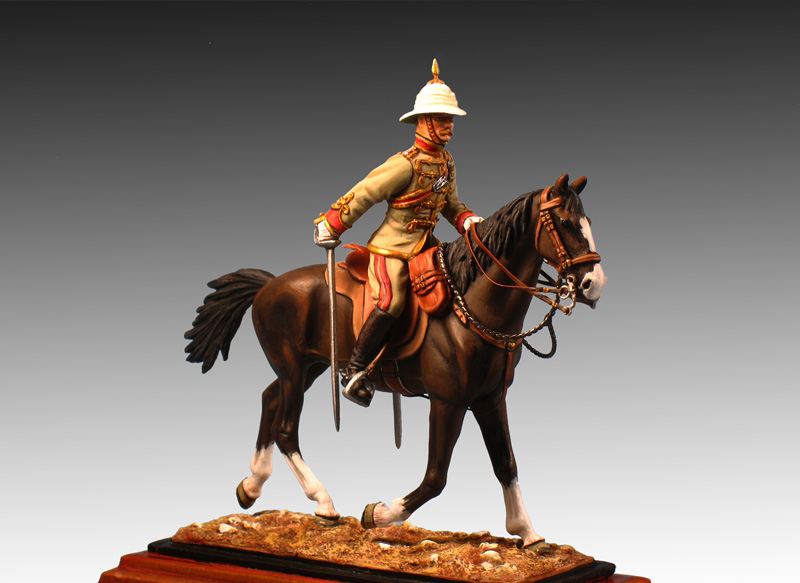
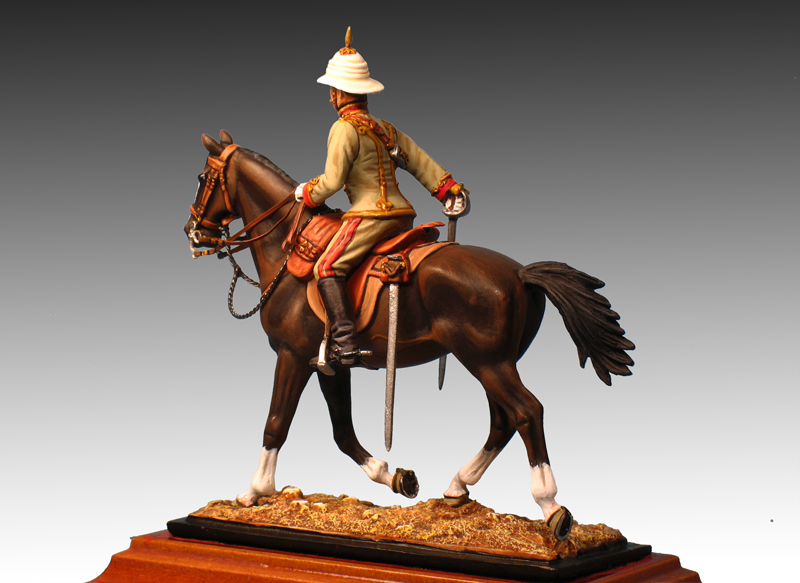


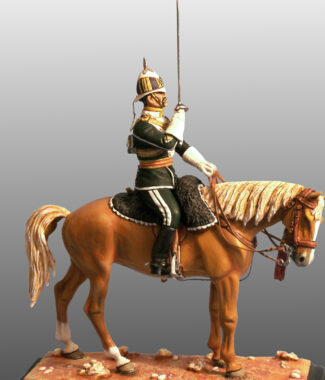
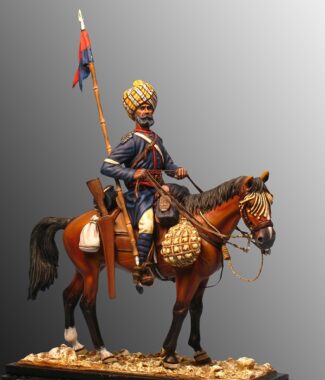
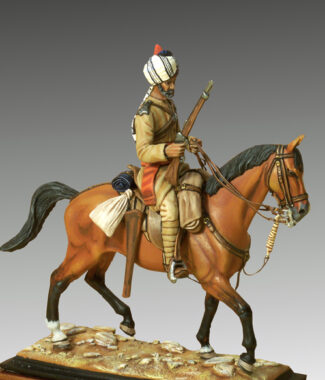
Reviews
There are no reviews yet.